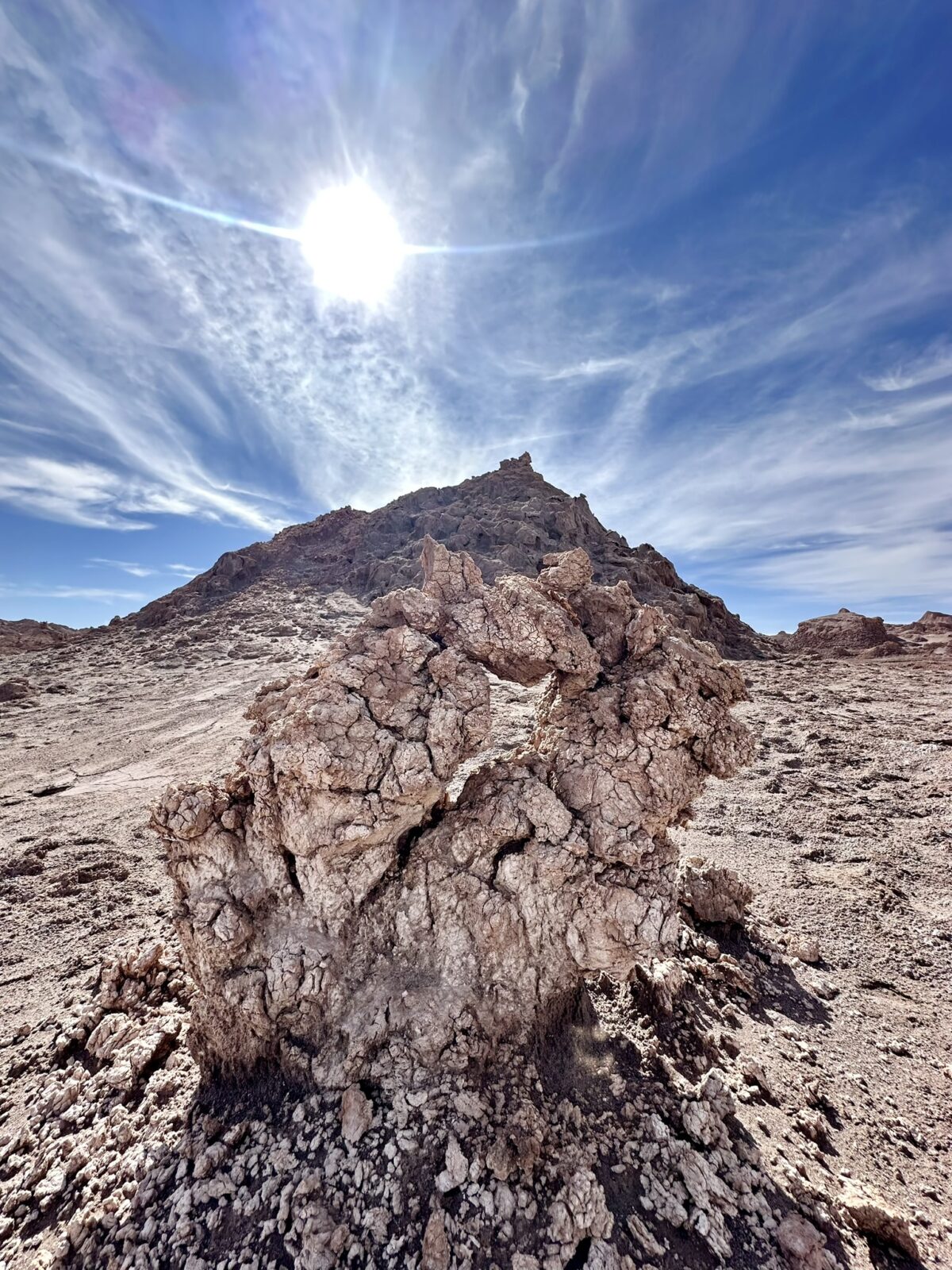Some runs are for fun. Others are to prove you can do it. The Atacama Crossing falls into the latter category. If you want to run 250 kilometers (about 155 miles) through the driest place on Earth, this race is for you. There’s also spectacular scenery of Chilean sand dunes, salt lakes, and volcanoes — a landscape that’s been compared to Mars. But no guarantee you’ll fully enjoy this grueling experience.
What makes this race so hard? Obviously, the distance. But also an altitude averaging 8,000 feet throughout the race. And did we mention how dry it is?
The race starts at an elevation of 10,500 feet in Chile’s beautiful Rainbow Valley, named for its colorful rocks. The route has ups and downs as it drops to lower elevations, sometimes following narrow valleys that ancient Inca traders used. Runners will traverse a slot canyon and spend a night camping beside a flamingo-filled lake. The race ends in the touristy town of San Pedro de Atacama.

Atacama Crossing is one of the annual 4 Deserts Ultramarathon Series. The other three races are the Gobi March in Mongolia, the Namib Race in Namibia, and The Last Desert in Antarctica. Runners can enter just one or sign up for all four. Talk about bragging rights!
Runner Ash Mokhtari has run the Atacama Crossing eight times! In an interview for the Marathon Handbook, he talked about how he prepares for the race. He starts training six months ahead of time. Since he lives in Canada — not an ideal prepping ground for a hot, dry race — he spends 30 minutes in the sauna after training runs.

“Ideally if you don’t live in a hot place, you want to spend two weeks in the desert to allow your body to acclimatize to the heat,” Mokhtari said. “The Atacama is a high altitude desert so the body needs three weeks to acclimatize to the altitude as well.” He acknowledged that this isn’t possible for most people unless they’re retired or pro ultra runners. He recommends cross-training and practicing running with a backpack.

The Atacama Desert’s uneven, shoe-chewing terrain “will bring even the most seasoned ultra runner to an eventual walking pace,” Mokhtari said. “At places the salt flats alternate between hard-packed salt sheets, razor sharp crystals growing out of the ground or frozen-cauliflower heads that might crumble into a hole with your foot in it.”
The next Atacama Crossing goes from March 30 to April 5, 2025. Competitors need to arrive by March 28 — or sooner if they can, to acclimatize. Plan to stay afterward to relax and enjoy the Atacama Desert at a more leisurely pace. For a real treat, you can book a luxury stay at Explora Atacama, which offers multiple saunas, pools, and Jacuzzis to ease your sore legs.

Disclaimer: While this article was not sponsored, Explora Atacama hosted the writer during her visit to Chile. As always, Outdoors Wire operates independently, and this doesn’t influence our coverage.
